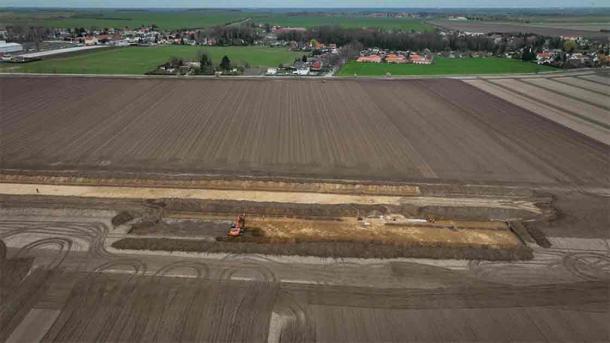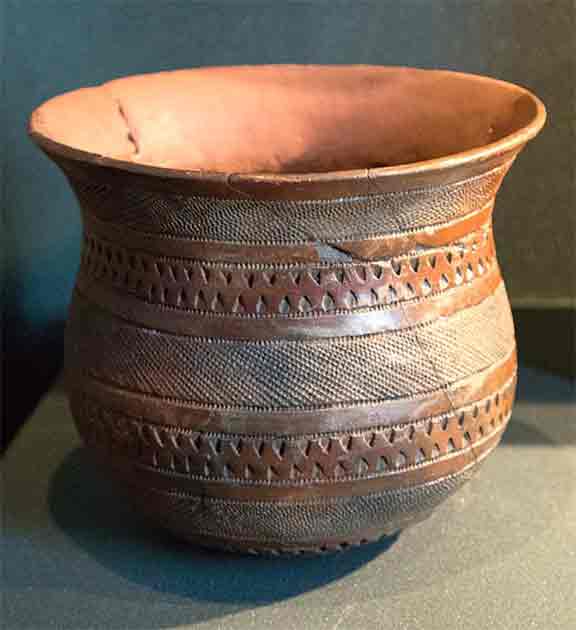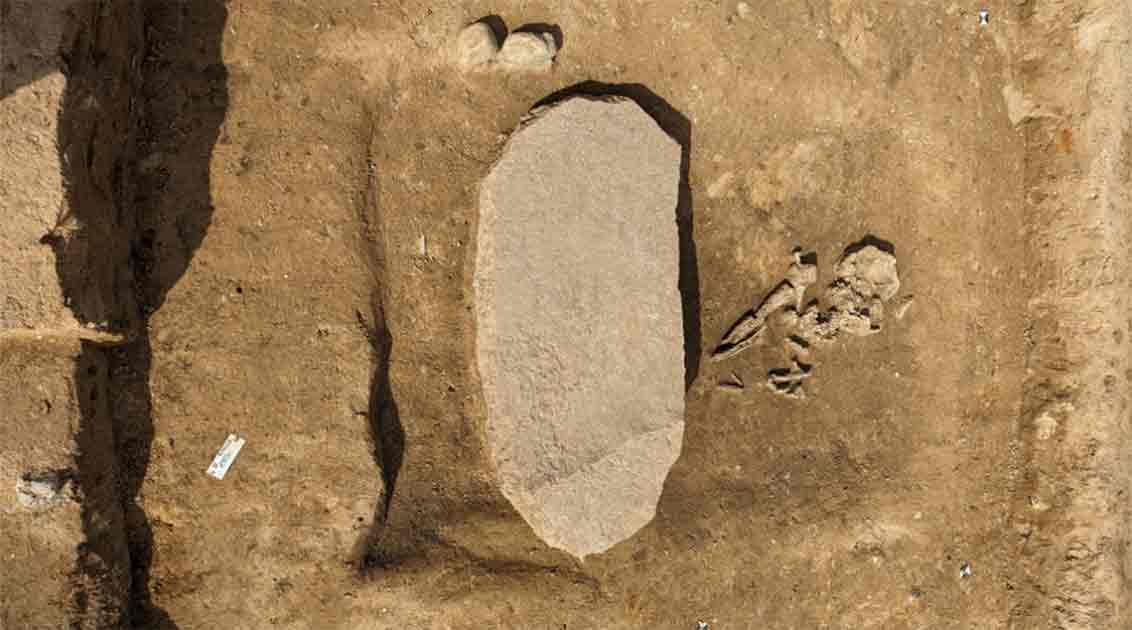Bronze Age German Grave was Built to Hold a “Zombie”
There’s always something new in archaeology, it would seem. In an unexpected development, archaeologists performing excavations in eastern Germany excavated a 4,200-year-old grave containing the skeleton of a man who was apparently believed to be at risk of becoming a “zombie”.
The archaeologists reached this conclusion because this individual, who was somewhere between the ages of 40 and 60 when he died, was buried with a heavy stone slab laid across his legs. The slab was approximately three feet (one meter) in length, 20 inches (50 centimeters) wide and four inches (10 centimeters) thick, and its purpose would have been to prevent the grave’s occupant from digging his way out of his grave, as zombies (or, more accurately, revenants) have been known to do.
The tomb of the suspected zombie was found near the village of Oppin, which is located southwest of Berlin in the state of Saxony-Anhalt. It was uncovered during excavations that have been launched along the route of a planned long-distance, underground power line known as the SuedOstLink, which will transmit electricity from Saxony-Anhalt into Bavaria.
These exploratory digs are being sponsored by the State Office for Monument Preservation and Archaeology of Saxony-Anhalt. They are designed to ensure that historical treasures aren’t lost or destroyed by the upcoming project.
- Rare Artifacts Found in Two 6th Century Bavarian Graves in Germany
- Grim Vampire Child Burial in Poland Featured “Anti-Vampire” Padlock

The zombie grave was discovered in open farmland in Saxony-Anhalt (MDR)
While tales of zombies, vampires and other undead ghouls were especially common in Europe during the Middle Ages, not much is known about how deeply the revenant concept penetrated the mythologies of people living in the Bronze Age. The discovery of this zombie burial in eastern Germany demonstrates that people in the region were aware of the legends as far back as the third millennium BC, which suggests they date back even farther into prehistory.
The Living Dead
The archaeologists and other officials involved with the SuedOstLink excavations were delighted to find confirmation of belief in revenants that predates the historical age.
“We know that even in the Stone Age, people were afraid of revenants,” said archaeologist and Project Manager Susanne Friederich, in an interview with the German public broadcasting outlet MDR. “Back then, people believed that dead people sometimes tried to free themselves from their graves.”
The revenant or zombie was a fixture in various ancient mythologies, including those of the Celtic and Norse people. The fear of revenants was also a real phenomenon in Ancient Greece, which was reflected in their practice of weighing down entombed corpses. Abundant literature reveals that the Romans believed in revenants, and in their case it was common practice to put stone blocks in the mouths of the dead to stop them from rising and eating the flesh of the living.
- Ancient Greeks apparently feared zombies so much they weighed down the dead
- Witches, Vampires and Werewolves – 10 Ghoulish Archaeological Discoveries

The grave and its zombie occupant came from the Bell Beaker culture, who flourished in Europe some six millennia ago (Zde / CC BY-SA 4.0)
In medieval times such beliefs were extremely widespread, as it was alleged that deceased witches, possessed people, those who had committed suicide, and individuals who were bitten by vampires would break free from their graves to join the ranks of the walking dead. As recently as the 1600s there was an outbreak of anti-revenant (and anti-vampire) hysteria in Poland, with precautions frequently being taken during burials to trap people suspected of being zombies or vampires in their graves.
Laying a huge stone across the body was one way to prevent the evil dead from rising. But it was not the only one.
"There are graves where the corpse even lies on its stomach,” Friederich said. “If it lies on its stomach, it burrows deeper and deeper instead of rising to the surface ... there are also dead bodies lying on their stomachs who were also pierced with a lance, so they were practically fixed in the ground."
The idea that zombies can only be killed by destroying their heads or brains appears to be a modern variant of the ancient legends. The closest equivalent can be found in Roman times, when apparently some bodies were dismembered before burial to protect them from the zombie curse.
The Bell Beaker Zombie Breakers
The newly discovered Bronze Age burial has been linked to the Bronze Age Bell Beaker culture. After emerging as a distinct group approximately 4,800 years ago, the people of the Bell Beaker culture spread out across Europe in waves, eventually extending their range from Scandinavia in the north to Britain in the west to northwest Africa in the south.
The Bell Beaker moniker relates to a type of drinking vessel that has been found at excavation sites linked to this culture. Since since they had no system of writing there is no way to know what they called themselves.
The Bell Beaker people did have distinct burial customs that demonstrated a belief in the afterlife. They frequently buried their dead with an assortment of grave goods, which presumably would have made the lives of their deceased loved ones more enjoyable in the next world.
Until now, however, evidence showing an interest in or belief in zombies or revenants among the members of this Bronze Age culture has been lacking. Clearly the members of the Bell Beaker group that occupied eastern Germany at this time were aware of the lore, and obviously took it seriously.
As excavations continue along the planned route of the underground power line, archaeologists will be on the lookout for more ancient Beaker Bell burials, which may be found in the vicinity of the newly discovered grave. If a wave of revenant hysteria swept through the lands of eastern Germany 4,200 years ago, it’s quite possible that more zombie burials might yet be uncovered.
Top image: The 4,200-year-old grave with the large stone designed to stop the “zombie” within rising once again. Source: © State Office for Monument Preservation and Archeology Saxony-Anhalt, Anja Lochner-Rechta
By Nathan Falde
















